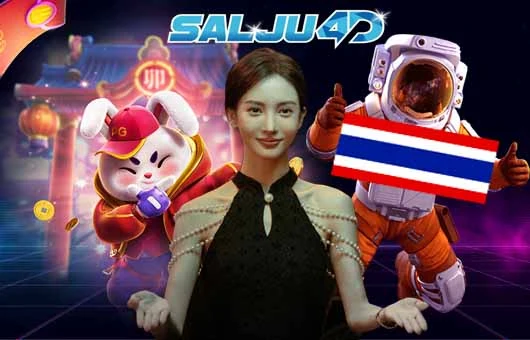Server Thailand
Salju4d: Agen Link Slot Server Thailand Super Gacor Terbaru Akun VIP Bet 100
slot
Couldn't load pickup availability
Salju4d: Agen Link Slot Server Thailand Super Gacor Terbaru Akun VIP Bet 100
 Slot thailand adalah server terbaru yang berasal dari thailand kini marak di indonesia. Slot server thailand yang sangat dikenal dengan super gacor nya membuat semua orang tertarik untuk memainkannya. Untuk bisa merasakan sensasional dari slot thailand, pastinya para slotmania harus bergabung pada agen link slot thailand terpercaya. Anda juga bisa bergabung di agen slot terpercaya yang bernama salju4d. Tidak dapat dipungkiri bahwa bergabung di salju4d anda bisa merasakan akun vip terbaru. Dengan adanya akun vip para slotmania bisa mendapatkan maxwin 777. Bagi slotmania yang menikmati slot server thailand super gacor dengan akun vip bisa melakukan bet dengan nominal 100. Dengan nominal seminim ini pastinya bermain di slot server thailand akan lebih menyenangkan.
Slot thailand adalah server terbaru yang berasal dari thailand kini marak di indonesia. Slot server thailand yang sangat dikenal dengan super gacor nya membuat semua orang tertarik untuk memainkannya. Untuk bisa merasakan sensasional dari slot thailand, pastinya para slotmania harus bergabung pada agen link slot thailand terpercaya. Anda juga bisa bergabung di agen slot terpercaya yang bernama salju4d. Tidak dapat dipungkiri bahwa bergabung di salju4d anda bisa merasakan akun vip terbaru. Dengan adanya akun vip para slotmania bisa mendapatkan maxwin 777. Bagi slotmania yang menikmati slot server thailand super gacor dengan akun vip bisa melakukan bet dengan nominal 100. Dengan nominal seminim ini pastinya bermain di slot server thailand akan lebih menyenangkan.
Share

Subscribe to our emails
Salju4d: Agen Link Slot Server Thailand Super Gacor Terbaru Akun VIP Bet 100.
- Choosing a selection results in a full page refresh.
- Opens in a new window.